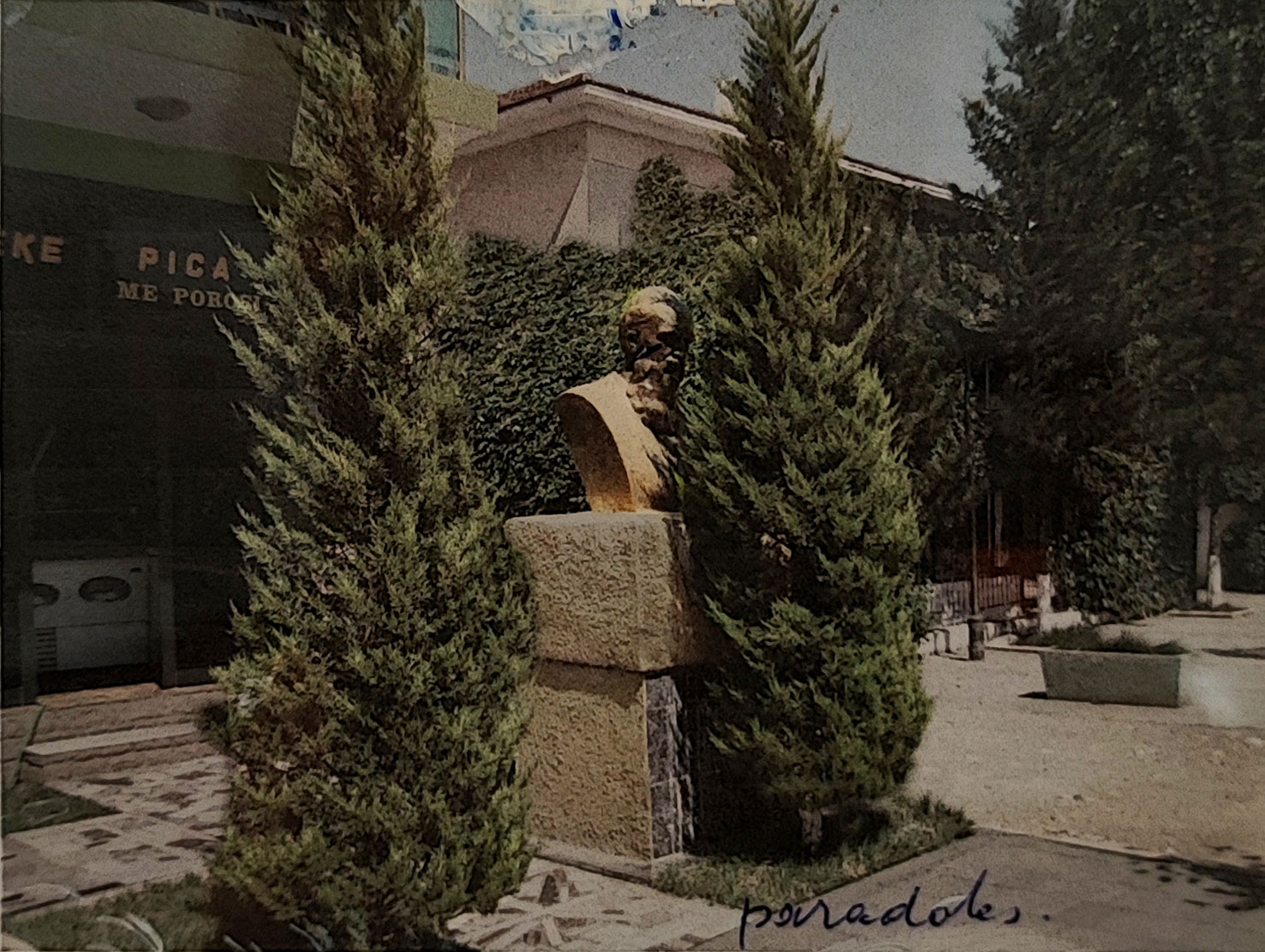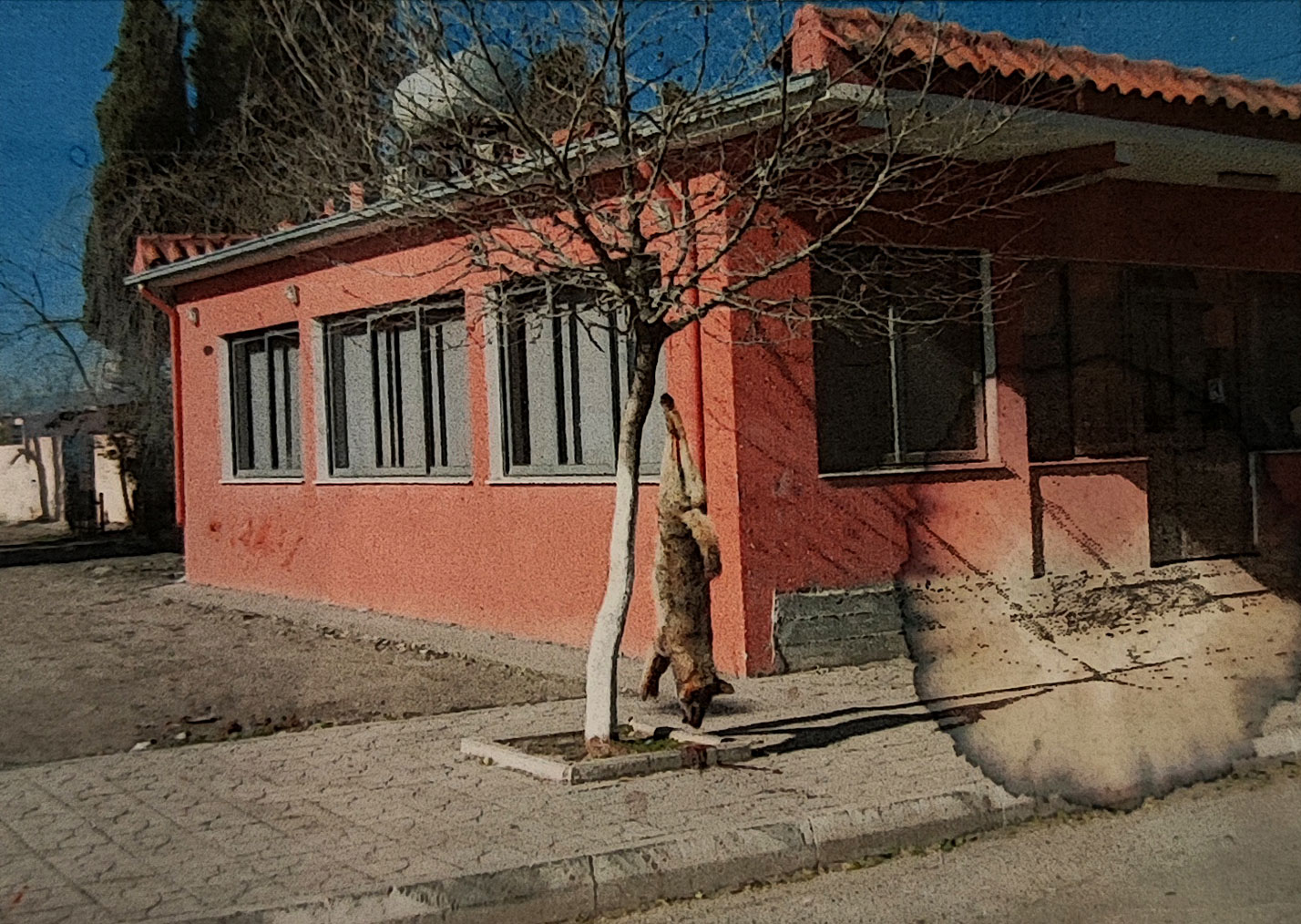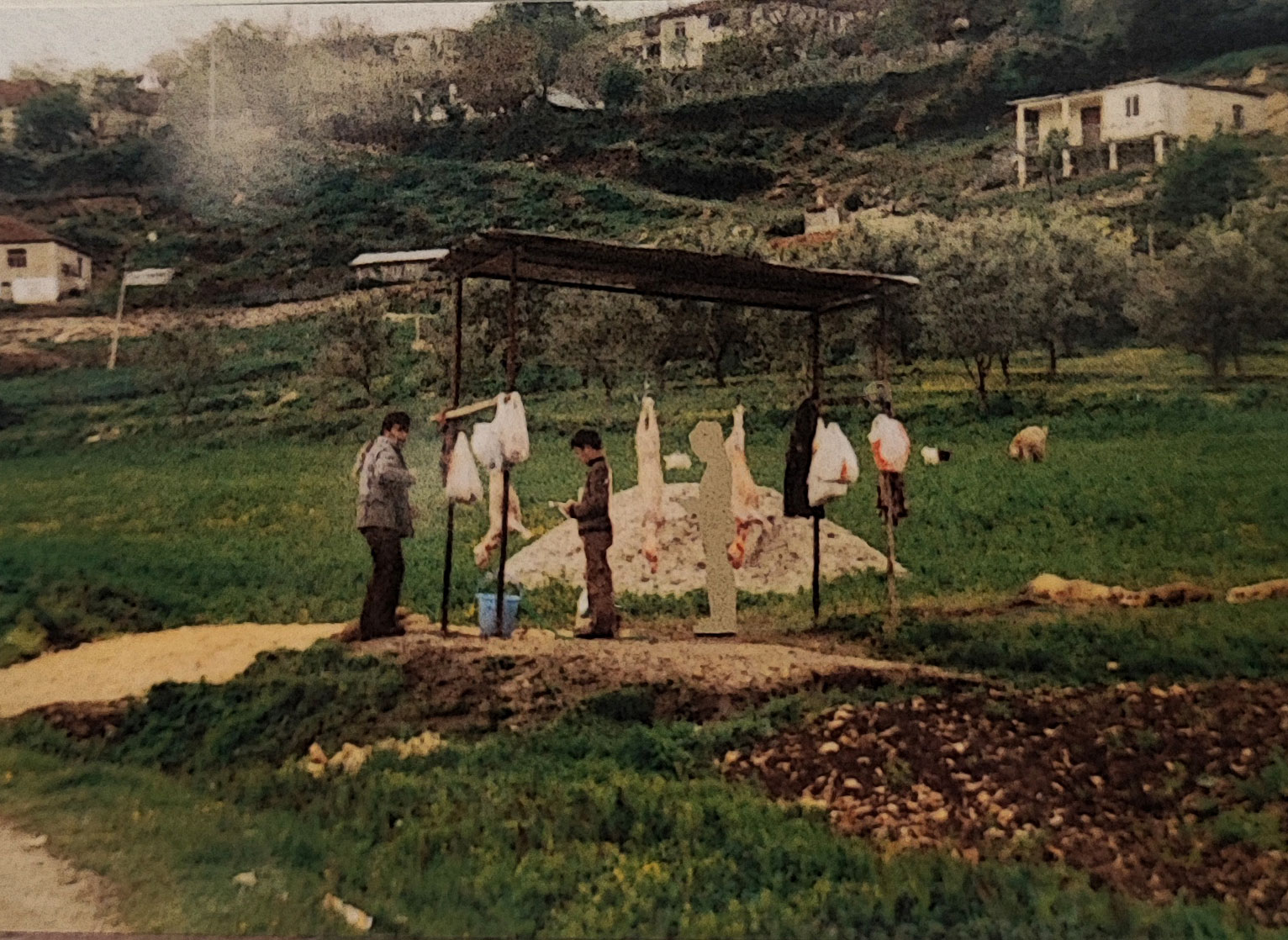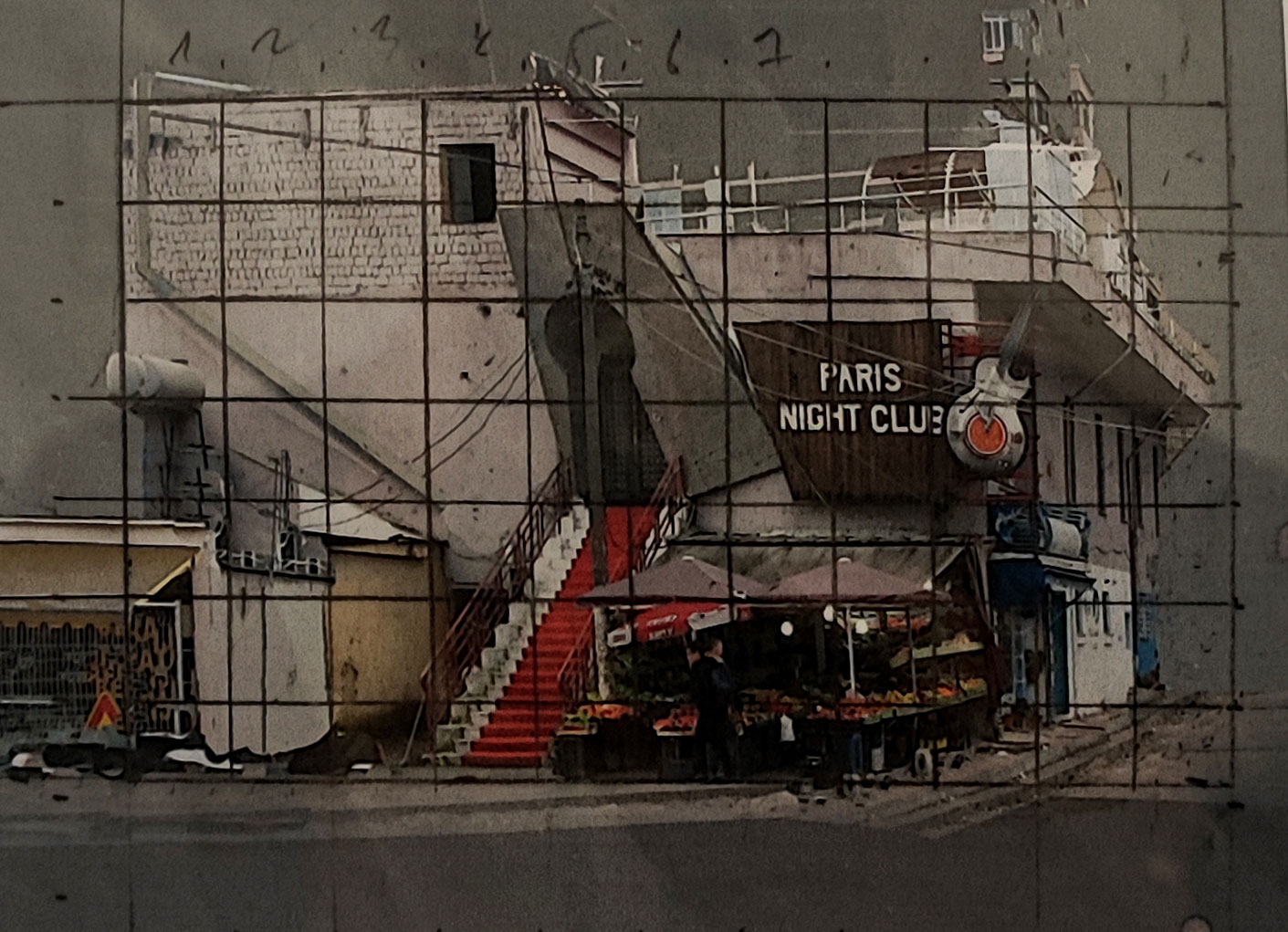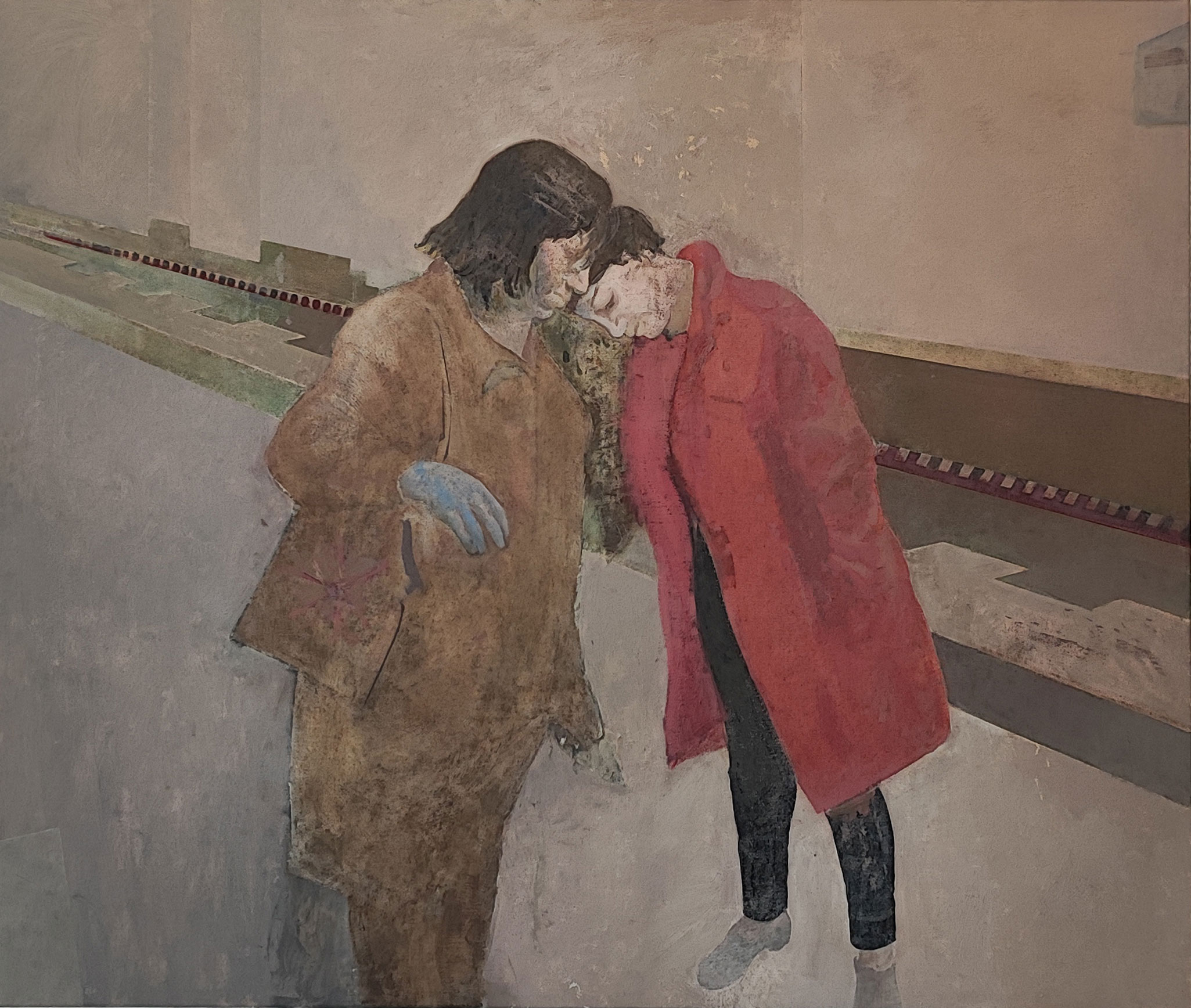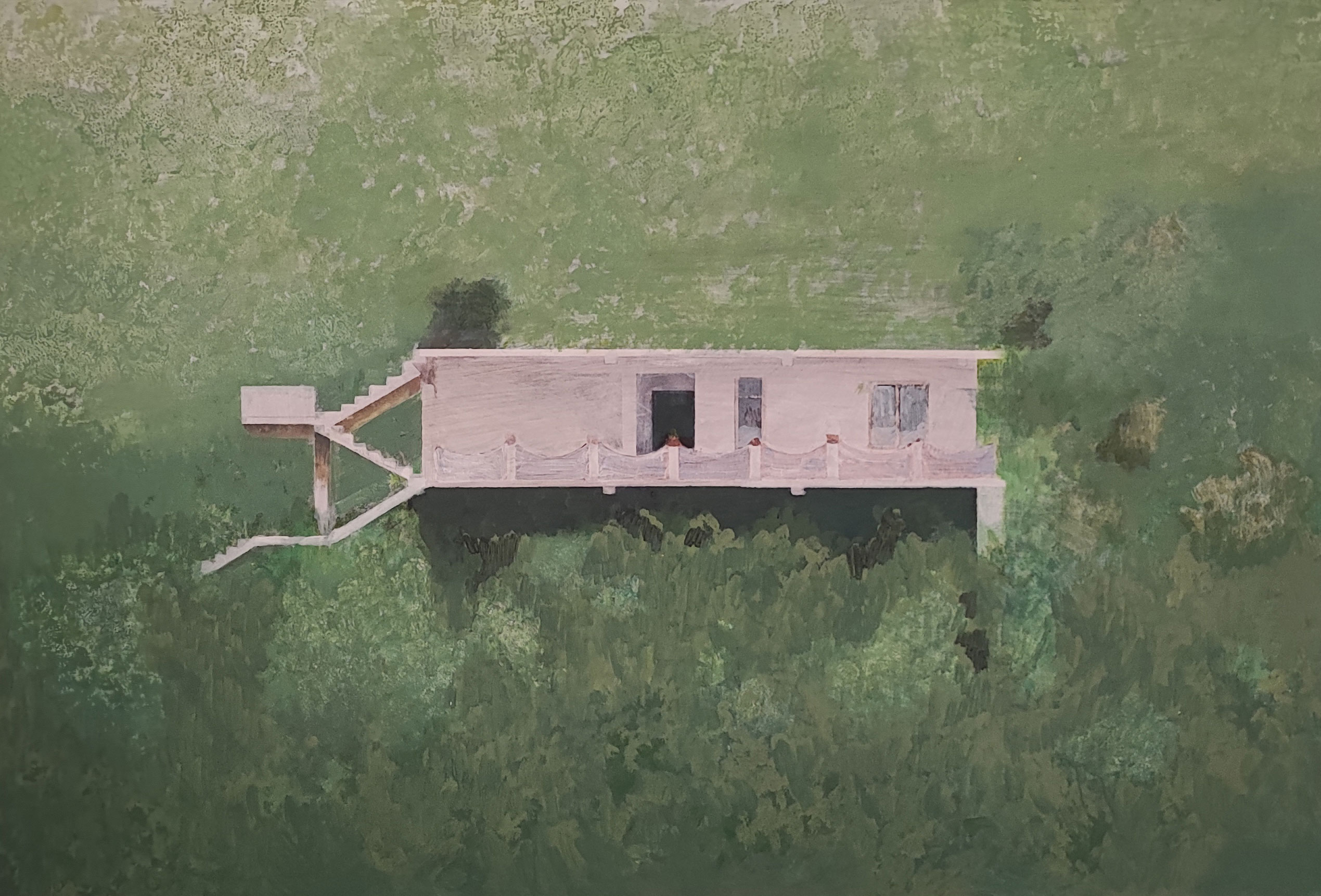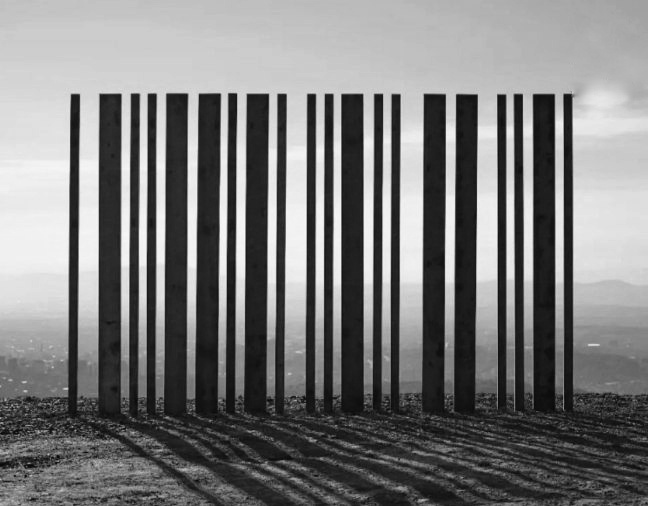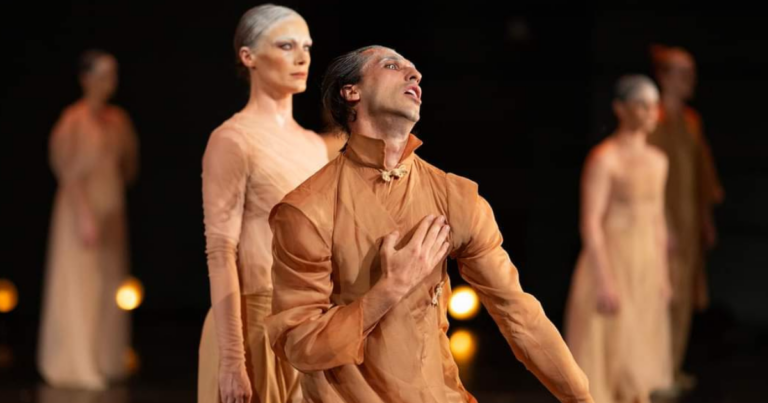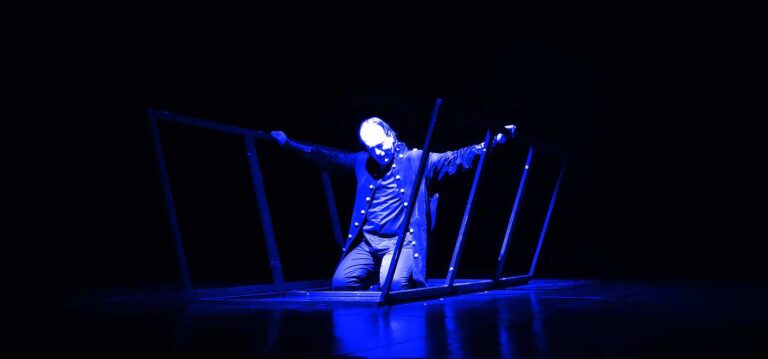A4 print / Edi Hila
Milot Gusia
Reflection on the Exhibition "A4 print" by Edi Hila
The pursuit of artistic truth is primary in the works of the artist Edi Hila. Truth, understood as the presentation of the reality of the world as it is, is much more important to the artist than any notion of "beauty".
For the artist Hila, the truth cannot be denied or avoided, even when it is not how we want it to be. Even when it’s not "beautiful" for the eyes of the beholder. And it is precisely this truth expressed visually, without the influence of censorship or hyperbolization that serves as a true evidence of the past. It doesn’t need any decoration.
The creative process of the artist Edi Hila is special: the raw material for his works consists not of sketches or drawings but of photographs, which he edits in Photoshop, providing a new artist reality. This approach suggests that his paintings are not primarily intended to document; rather, the subjects of the works are products of a long reflection of the artist towards his environment.
In the exhibition entitled "A4 print / Edi Hila", curated by the critic Shkëlzen Maliqi, the audience has the opportunity to meet the source of the creative process of the well-known artist Edi Hila, but also to experience two of his paintings.
Although, the purpose of the exhibition is not to present documentary photographs as separate works of art, (which would be really interesting), documentary photography in this exhibition plays a crucial role in providing data about different realities, which otherwise would have been impossible to understand.
Through these images, we can experience the important events of the transition history in Albania, but also discover a culture of the time, and become aware of the dramatic social changes that have taken place. These documentary photographs carry cultural values, reflecting the artist's vision and his interpretation of reality.
Although Edi Hila does not consider himself a photographer, his photographs shows the contrary. Although they are meant to be finished as paintings on canvas, their weight remains powerful.
With their direct realism and sharp investigation, they remind us of the photographic works of artists such as: Adam Broomberg, Oliver Chanarin, or Albrecht Tübke.
The power of Edi Hila's paintings is based precisely on the realism of the documentary photographs taken by the artist. The reproduction of these documentary photographs on canvas is the key factor that gives his paintings a strong artistic, but also social dimension.
But, undoubtedly, the greatest expressive power of the artist Edi Hila are his paintings, which manage to transform simple reality into a deep dimension of experience.
If we try to decipher art, then we will realize that it is actually a series of human activities, which in the final product include creative imagination, technical skill, emotional power and conceptual idea. And all these are present in the two paintings on canvas in this exhibition. Precisely, in the hand of the master, and his sharp and deeply thought-out strokes, reality gains its full meaning.
The power of Edi Hila's paintings lies precisely in the escape from elitism in the everyday world, which enables us to connect with time and a certain world.
And precisely for this reason, Edi Hila's paintings manage to create much more powerful and meaningful reactions. The importance of his works comes from the importance they take on their audience.
The art of Edi Hila is an art that describes the complex tangible and intangible nuances of Albanian culture. It combines personal and national culture. What does it mean to be Albanian? What does it mean to be European? What does it mean to be Albanian-European? Therefore, Edi Hila's oeuvre try to describe culture in an intercultural way. It provides us unique perspectives. It provides us a snapshot in history and anthropology, giving a humane context to the surprising occurrences that took place in Albanian society. It doesn`t provide a single answer, but multiple answers. In addition to reflecting the reality of the time, it also prove how in such a harsh time there could be such sensitive artists who interpreted the events in such an original and complex way.
Nowadays, we absorb daily images that reveal numerous social problems that come to us through television, radio and social networks. We are overwhelmed by everyday emotions, we feel and empathize, but we are unable to react and feel helpless. Therefore, we often become indifferent to images. But we must find the will to comprehend that it is images that have the power to evoke emotions, and emotions are unique by making us feel. Because, to feel is one of the greatest human wonders.
When we experience the works of a special artist like Edi Hila, we find that we are touched and changed. And this is precisely the power of art that enables messages to reach us and make us evolve. We are constantly inspired by each other by sharing our experiences through the exchange of photographs and artwork, which gives us hope that our collective powers can bring about a positive change.
External Links:
- Galeria e Ministrisë së Kulturës. Linku:https://www.facebook.com/Galeria.MKRS
- Shaban Maxharraj. Koha Ditore. “A4 Print” outlines Albania’s transition from dictatorship to democracy”. Linku: https://www.koha.net/en/kulture/416615/a4-print-skicon-kapercimin-e-shqiperise-nga-diktatura-ne-demokraci
- Kultplus. “Hapet ekspozita e titulluar “A4” nga Edi Hila”. Linku: https://www.kultplus.com/arti-pamor/hapet-ekspozita-e-titulluar-a4-nga-edi-hila/

About the author
Milot Gusia works as a professor and editor, as well as a critic in the local and international art scene. He has worked on a number of programs in the field of art and culture.
He completed his master's studies in Graphic Design at the University of Pristina, as well as his MBA studies at Staffordshire University, Great Britain.

